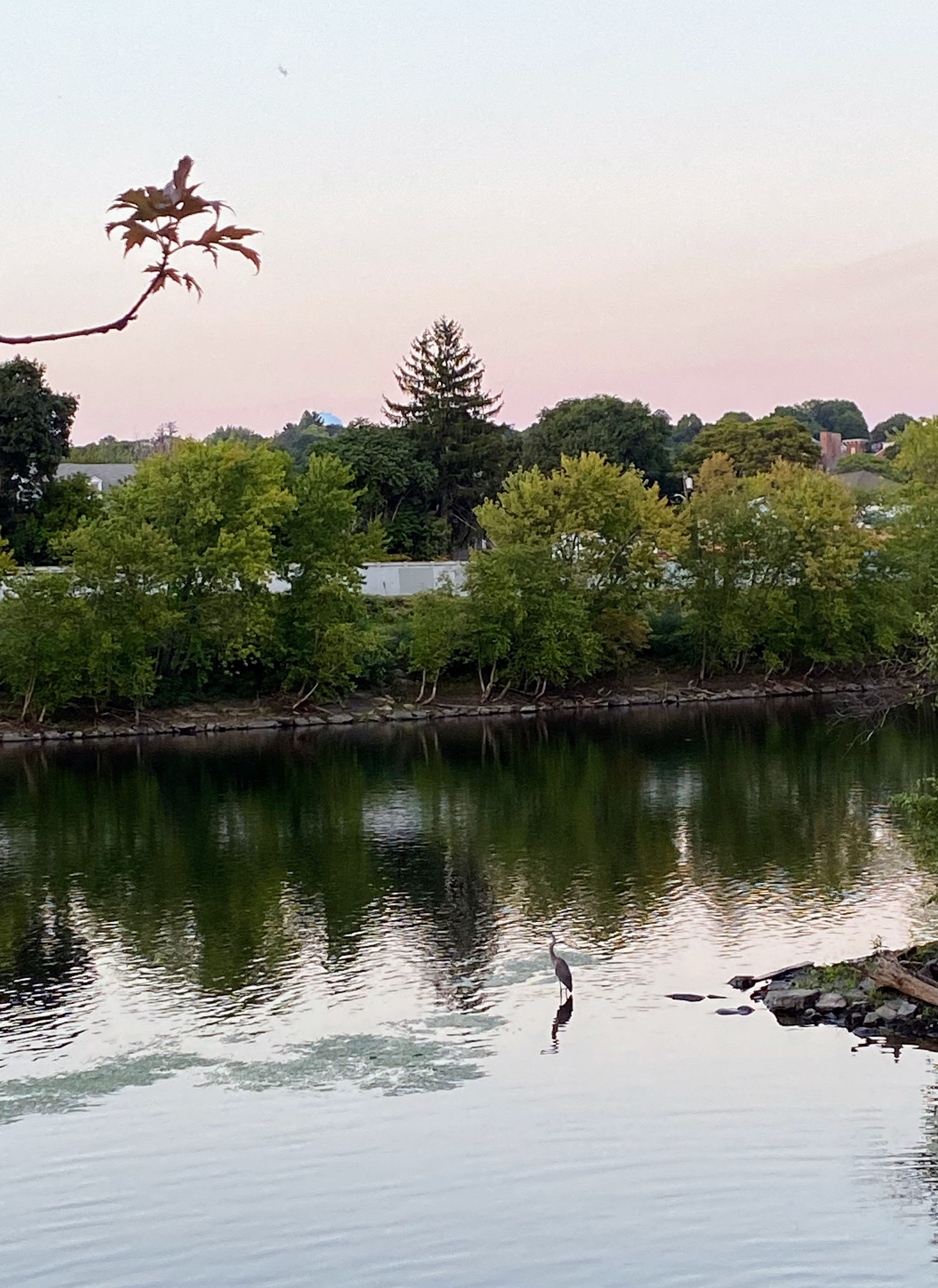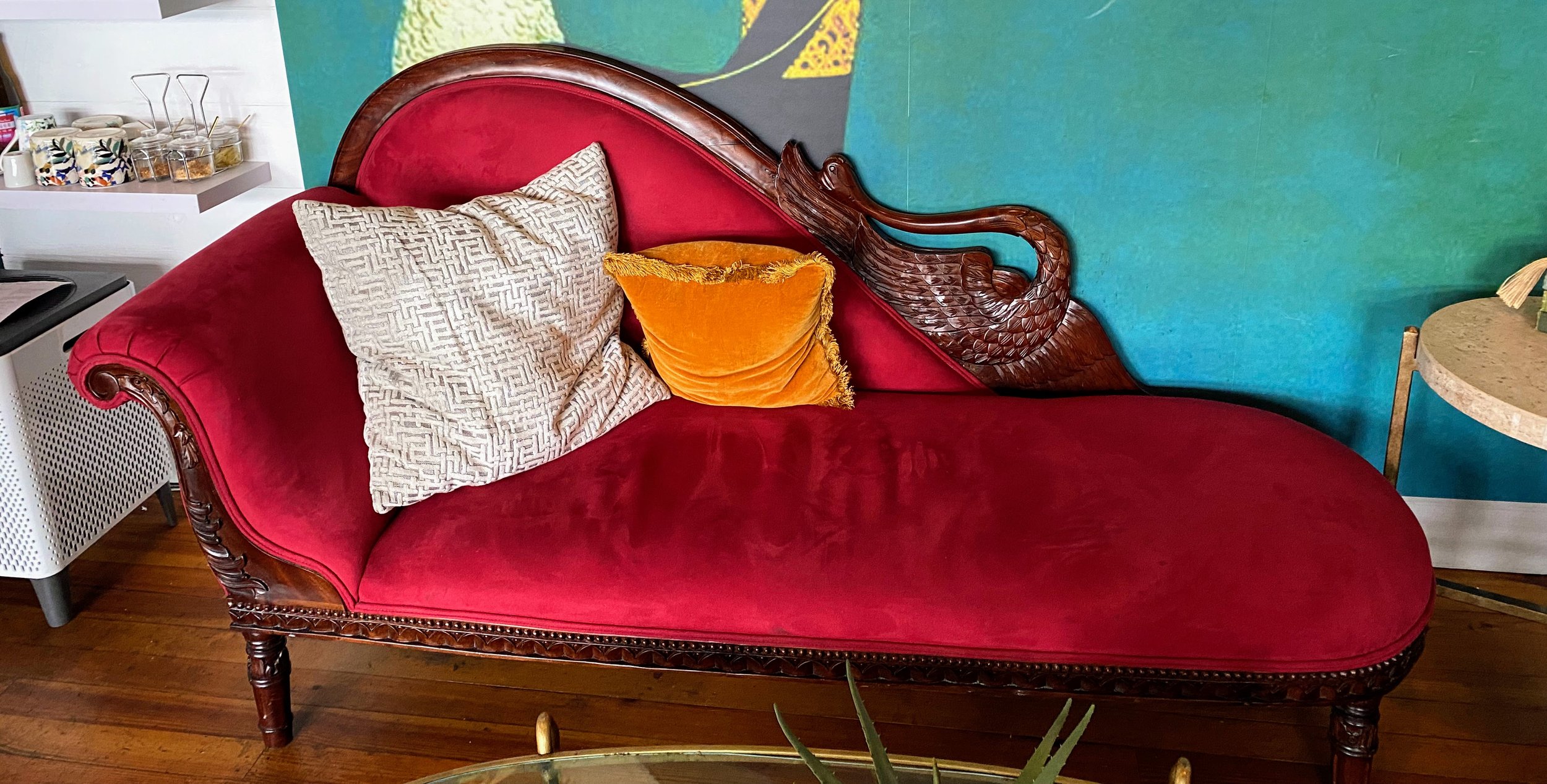September Magic: A List
When I was teaching, my September soundtrack was always Green Day's “Wake Me Up When September Ends.” I would seem to have that whiny punk refrain in my head anytime I tried to pull myself out of the otherwise all-consuming grind of September at boarding school. “Weeehhhkkk me up. Weeeehhhhhn Septem, ber, ends.” It’s not that I was asleep; on the contrary, I was too awake. The song is a plea for rest even more than it is a request to be roused.
This year, I didn't have to dread September. I didn't have anything to do, or anyone to answer to. For the first time in fifteen years, no one was emailing me. (OK, a few people, but a very small few.) Now it's the last day of the month! I had a thought. It’s been my First September Sans School (FSSS), so perhaps I ought to mark the occasion and share a bit of the magic that accompanied me through this strange time.
Magic (noun): when you know that you’re in the right place at the right time; when you couldn’t have orchestrated this —you were helped, somewhere, somehow; when beauty is obvious and no part of you wants to resist it.
[Note: the 'how' of magic is just as important as the 'what,' so I’ve noted how I came across each item, too.]
1. Love This Giant, an album by David Byrne + St. Vincent (2012). A brass band turns even the unfamiliar chill of early fall into warm nostalgia for a golden eternity. Shouldn't surprise me that an experimental orchestral rock album from the early 2010s would feel magical to me; after all, 2012 was a magical year in my life. Must've been something in the air, pressed into the vinyl, transmitted across space-time. Back in March of this year, a mere month after breaking up with my job, I traveled to Manhattan with some of my family to see David Byrne in his new rock opera, American Utopia. For whatever reason, it never occurred to me that the show would be -- simply, wonderfully -- a Talking Heads gig. At least a dozen percussionists and vocalists and others, plus Byrne himself, occupy the stage, and you can’t look away. Dressed in bluish-grey jumpsuits like a painting crew on their way to a funeral cortege, their bodies are gorgeous and transcendent instruments, loving every groove. “It turns out,” Byrne says to the audience at one point, “the thing we humans like most of all is watching each other.”
And if we can’t watch, listening will do. Byrne, one of our great bards, is not just a musical inspiration for me (and not just the author of one of my all-time favorite albums, Stop Making Sense); he’s also a philosopher, a spiritual leader. His book How Music Works is the only history of humanity I need: it follows his thesis about music history, which is that music styles and forms emerged from the places in which they were created — for which they were created. Intricate West African drum lines belong in the great expanse of the outdoors, where they came into being; medieval European chants, with their simple harmonic structures, took shape in the cloistered stone sanctuaries of their era. Byrne’s late 70s proto-punk new wave music was written for windowless basement clubs like CBGB’s. We make things that fit our world. Our habitats make us sing.
[I found Love This Giant in a record store in Newburyport, Massachusetts, where I spent the day with a friend. I almost didn’t buy it, but I liked my chat with the easygoing store clerk so much that I lingered longer — long enough to see Byrne’s placid deadpan and Annie Clark’s doe-eyed death stare, and say, yeah.]
2. Living as a Bird, a book by Vinciane Despret, the Belgian philosopher (French edition, 2019 / English trans. 2021). It’s a book about birds, but also about the people who study them. She explores the questions we asked as children, and then forgot to keep asking (unless we grew up to become ecologists)— questions like, “Why do the birds sing?” For Despret, this question is not strictly scientific, for it involves an understanding of the people who work very hard not to make birds into people, but to let them be birds; people who spend a great deal of time observing, all while resisting the easy, obvious narrative. Despret is fascinated with the story that finally emerges out of the reticence of the scientist. She knows that birds evoke poetry in their human observers — always have, always will. But who are these creatures, really? What is their relationship to territory, to song, to community? Do they sing only for each other? Or, like Byrne’s theory of music: do they sing for the land?
[I found the book because Despret’s recent short story collection, Autobiography of an Octopus, was on a bedside table in our borrowed apartment in Besançon this summer, an apartment that was clearly home to big-time readers with an enviable book collection. Autobiography was so weird, so confounding, that I went in search of an interview with the author, only to find the rest of her oeuvre (and her — she’s your favorite professor) even more magnetizing. Luckily, her bird book was in stock in one of the (varied, numerous) bookstores in Besançon.]
3. Economy Skeleton, a linoleum block print by Alex Pedroza (2022).
There’s nothing like a long, unscripted phone call with a friend while ensconced in an easy chair. Economy Skeleton conjures this domestic pleasure, and yet its figure is Death, which appears here as a friendlier-than-usual version of itself. (Slightly neurotic, too, no? Am I projecting?) Death’s colloquial posture, with its improvised cup of tea, feels surreptitious and delightful, like a blurry photograph of your parents when they were young, or a half-read paperback next to the toilet in a friend’s bathroom. Is it the texture of the companionable house plants? The phone’s cradle perched under the unassuming moon? Which detail is it that keeps me so present in this scene? What is it about this bony friend in media res that makes me, suddenly, certain that the telephone is the best invention in human history? If I still taught English (an increasing inevitability), I’d assign Economy Skeleton as a writing prompt. (Give it a try.)
[The artist, a burgeoning physicist in addition to being a prolific artist and zine-maker, is a dear friend. She recounted the story of her piece’s title: “The day after I carved the block, I went to Madeline’s house and she had a box of materials for her anatomy summer class that included a toy skeleton. It came with the label ‘Economy Skeleton,’ and that was just very curious to me.” She gifted me a print of Economy Skeleton along with a copy of her Summer 2022 zine, Tessellationz. The print sits atop my piano, where it reminds me to make a pot of tea, call a friend, and try not to fear death too much.]
Other miscellaneous magic for the record:
Chaise Longue, a song by Wet Leg (2022).
The Great Blue Heron. (1.5 million years old.) (The species, that is; the individual herons can live more than twenty years though!)
Emails & texts from former students.
EmilyBlaster, where you use your ink quill to shoot words from Emily Dickinson’s poems, in the right order of course. It’s a real video game that started out as fiction in Gabrielle Zevin’s bestselling novel, Tomorrow and Tomorrow and Tomorrow (2022) (also pretty magic).
“The Sound of Her Wings,” Episode #6 in The Sandman TV series, Netflix (2022).
The good news, according to the Audubon Society, is that herons are not really endangered by climate change. Cool, I guess?
Heron (?) -carved chaise longue in Newburyport! You should be horizontal now.




